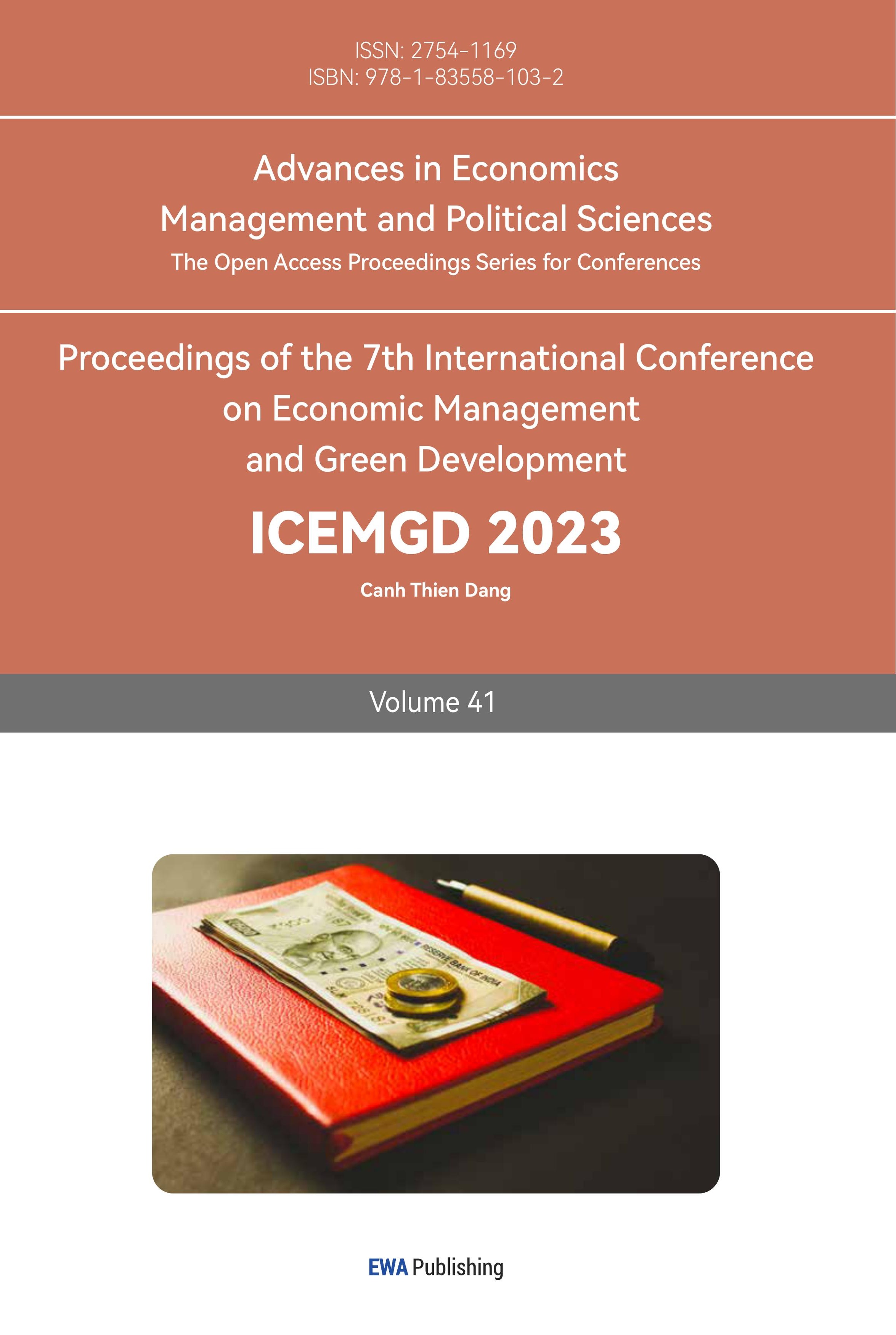References
[1]. Muda, I., Indra, N., & Dharsuky, A. (2021). The community Walmart uncertainty model: A review of ownership and capital structure aspects. Uncertain Supply Chain Management, 9(1), 49-56.
[2]. Herciu, M., & Ogrean, C. (2017). Does capital structure influence company profitability? Studies in Business and Economics, 12(3), 50-62.
[3]. Clayton, M. J. (2009). Debt, investment, and product market competition: A note on the limited liability effect. Journal of Banking & Finance, 33(4), 694-700.
[4]. Matsa, D. A. (2011). Running on empty? Financial leverage and product quality in the supermarket industry. American Economic Journal: Microeconomics, 3(1), 137-173.
[5]. Amat, O., & Manini, R. (2017). Credit scoring for the supermarket and retailing industry: Analysis and application proposal.
[6]. Kabuye, F., Kato, J., Akugizibwe, I., & Bugambiro, N. (2019). Internal control systems, working capital management and financial performance of supermarkets. Cogent Business & Management, 6(1), 1573524.
[7]. Malshe, A., & Agarwal, M. K. (2015). From finance to marketing: The impact of financial leverage on customer satisfaction. Journal of Marketing, 79(5), 21-38.
[8]. Chevalier, J. A. (1995). Capital structure and product-market competition: Empirical evidence from the supermarket industry. The American Economic Review, 415-435.
[9]. Momin, A. (2022, July 12). Retail Industry Analysis: A $28 Trillion Market. Pestleanalysis.com. https://pestleanalysis.com/retail-industry-analysis/.
[10]. Zisoudis, Nikolaos & Karelakis, Christos & George, Theodossiou & Loizou, Efstratios. (2020). Financial Analysis of Major Retail Chains within a Turbulent Economic Environment. Studies in Business and Economics. 15. 208-222. 10.2478/sbe-2020-0054.
Cite this article
Huang,H.;Liu,Z.;Zhao,H. (2023). Research on Capital Structure and Investment Value of Supermarket Industry. Advances in Economics, Management and Political Sciences,41,34-40.
Data availability
The datasets used and/or analyzed during the current study will be available from the authors upon reasonable request.
Disclaimer/Publisher's Note
The statements, opinions and data contained in all publications are solely those of the individual author(s) and contributor(s) and not of EWA Publishing and/or the editor(s). EWA Publishing and/or the editor(s) disclaim responsibility for any injury to people or property resulting from any ideas, methods, instructions or products referred to in the content.
About volume
Volume title: Proceedings of the 7th International Conference on Economic Management and Green Development
© 2024 by the author(s). Licensee EWA Publishing, Oxford, UK. This article is an open access article distributed under the terms and
conditions of the Creative Commons Attribution (CC BY) license. Authors who
publish this series agree to the following terms:
1. Authors retain copyright and grant the series right of first publication with the work simultaneously licensed under a Creative Commons
Attribution License that allows others to share the work with an acknowledgment of the work's authorship and initial publication in this
series.
2. Authors are able to enter into separate, additional contractual arrangements for the non-exclusive distribution of the series's published
version of the work (e.g., post it to an institutional repository or publish it in a book), with an acknowledgment of its initial
publication in this series.
3. Authors are permitted and encouraged to post their work online (e.g., in institutional repositories or on their website) prior to and
during the submission process, as it can lead to productive exchanges, as well as earlier and greater citation of published work (See
Open access policy for details).
References
[1]. Muda, I., Indra, N., & Dharsuky, A. (2021). The community Walmart uncertainty model: A review of ownership and capital structure aspects. Uncertain Supply Chain Management, 9(1), 49-56.
[2]. Herciu, M., & Ogrean, C. (2017). Does capital structure influence company profitability? Studies in Business and Economics, 12(3), 50-62.
[3]. Clayton, M. J. (2009). Debt, investment, and product market competition: A note on the limited liability effect. Journal of Banking & Finance, 33(4), 694-700.
[4]. Matsa, D. A. (2011). Running on empty? Financial leverage and product quality in the supermarket industry. American Economic Journal: Microeconomics, 3(1), 137-173.
[5]. Amat, O., & Manini, R. (2017). Credit scoring for the supermarket and retailing industry: Analysis and application proposal.
[6]. Kabuye, F., Kato, J., Akugizibwe, I., & Bugambiro, N. (2019). Internal control systems, working capital management and financial performance of supermarkets. Cogent Business & Management, 6(1), 1573524.
[7]. Malshe, A., & Agarwal, M. K. (2015). From finance to marketing: The impact of financial leverage on customer satisfaction. Journal of Marketing, 79(5), 21-38.
[8]. Chevalier, J. A. (1995). Capital structure and product-market competition: Empirical evidence from the supermarket industry. The American Economic Review, 415-435.
[9]. Momin, A. (2022, July 12). Retail Industry Analysis: A $28 Trillion Market. Pestleanalysis.com. https://pestleanalysis.com/retail-industry-analysis/.
[10]. Zisoudis, Nikolaos & Karelakis, Christos & George, Theodossiou & Loizou, Efstratios. (2020). Financial Analysis of Major Retail Chains within a Turbulent Economic Environment. Studies in Business and Economics. 15. 208-222. 10.2478/sbe-2020-0054.









